5 Of The Best Female Characters From Children's Books
For Violet Baudelaire to Lyra Silvertongue, this collection of fictional females show that children's books don't need to be dominated by male characters...
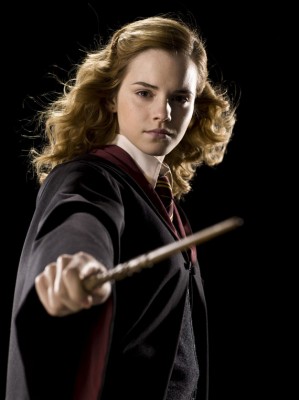
Painful though it is to admit, like everything else, literature is a boy’s club. Although the occasional non-soppy female hero has been present throughout the ages – Jane Eyre, Scout Finch, Chaucer’s Wife of Bath - for the most part, stories are entirely dominated by boys. Curiously enough this seems to be particularly true of children’s fiction – a demographic who care far less about the gender of a character than any other. Somewhere along the way, an out-of-touch publisher decided that for some peculiar reason, a male lead is ‘gender neutral’, whereas a principle female character pushes a book very firmly into ‘girly’ territory. Whole hosts of perfectly good books consequently lie languishing in a pink and glittery corner of Waterstones, the verdict having been made that whilst girls will get on just fine with a male lead, there is simply no way that a male child could enjoy a main character whose chromosomes are different to his own. Had Harry been Harriet, JK Rowling may not have enjoyed so much critical success.
This in itself is one of the biggest misconceptions in literature, and one that has just begun to be recognised by the mainstream media. The Millenium Series, Stieg Larsson’s bestselling trio of books starring Lisbeth Salander, has shot to success despite Larrsson’s failure to supply his protagonist with a healthy amount of testosterone. Hermione Granger won us all over with her strong supporting role in the Harry Potters, and The Hunger Games, since its adaptation to film, has drawn in a massive audience of men and women alike, sparking an appreciation for a ‘girl character doing stuff that boy characters normally do’. Katniss Everdeen has been heralded as the anti-Bella Swan, providing young girls with someone substantial and independent to look up to (sidenote: be suspicious of those who bash on Twilight for being ‘one of the worst books in the world’ - it generally means they haven’t read a lot of books). It’s a shame that these books must be made into films and thoroughly stripped of their racial or cultural meanings in order for to be noticed, but hey - it’s a start.
…I needed to keep faith in my suspicions that perhaps girls could do more than merely simper in the background
However – shock horror – Katniss Everdeen is not the first strong female protagonist written for children. There was a whole multitude of books that I read when I was younger that gave me the relatable or admirable female character that I needed to keep faith in my suspicions that perhaps girls could do more than merely simper in the background. Out of them all, five stand out even now:
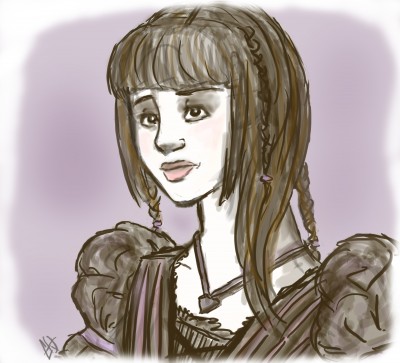
Violet Baudelaire from A Series Of Unfortunate Events by Lemony Snicket
A Series Of Unfortunate Events is to date one of my favourite series of books. The sardonic tone that Lemony Snicket (or Daniel Handler, to ditch the pseudonym) uses to tell the Baudelaire’s terrible tale gave nine-year-old me both the beginnings of my love of dark humour and one of my first resilient non-male leads to admire. For a long time I tried to emulate Violet’s style, chasing engineering brilliance by taking things apart to see if I could put them together again (I couldn’t) and tying my hair up in a ribbon to see if I would concentrate (it didn’t – and tying your hair up with a ribbon is hard as balls). Violet Baudelaire is a no-nonsense sharp-as-a-tack inventive genius who is arguably the most important Baudelaire child, the eldest and the natural leader of the three. Both calm in a crisis and totally relatable, independent Violet was a wonderful contrast to the weak-ass pansy Sabina Pleasure of the Alex Rider books, the other series I was reading at the time. Despite a disappointing film adaptation – in which the Baudelaire’s ethnically Jewish heritage was totally ignored – Violet remains to be one of my favourite fictional characters ever.
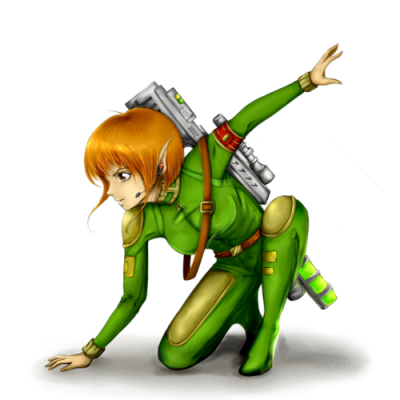
Holly Short from the Artemis Fowl series by Eoin Colfer
Holly is both the first and only female agent in the LEPrecon, a kind of fairy police force, who faces a great deal of adversity from her male colleagues (because apparently sexism can exist in any species). Although she is portrayed as white with longish brown hair in the graphic novel, she is explicitly described as having ‘nut-brown skin’ and ‘an auburn crewcut’ and being ‘pretty… but in a dangerous way’ which made her one of the first characters I experienced who wasn’t overtly feminine but didn’t encapsulate overly masculine features or traits to ‘compensate’. Although the Artemis Fowl series dragged a little after the first eight million books, Holly Short still captured my interest as someone to relate to and like despite being neither wholly ‘good’ nor ‘bad’. She deserves a special mention for not only being one of the strongest characters in a male-dominated series but also for being one of the strongest characters in a male-dominated series that was marketed largely for boys, providing them with (gasp!) a female protagonist who didn’t need to be rescued.
When [Trillian] wants to have a child, she nips to the sperm bank and she bloody well does
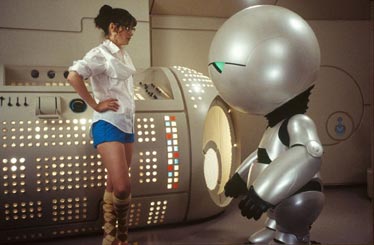
Trillian Astra from The Hitchhiker’s Guide To The Galaxy by Douglas Adams
The Hitchhiker’s Guide are a set of books that I enjoy as much at 18 as I did a decade ago, and my sole regret in life is letting my year five boyfriend borrow and subsequently keep my omnibus; what foolish things we do in the throes of love. Trillian is described as ‘a slim, darkish humanoid’ and ‘vaguely Arabic’, and is yet another character subject to the whitewashing that Hollywood so enjoys. She has not been portrayed well in any film or television adaptation of the books, which is an awful shame, as she’s actually really fucking cool. Rather than someone that exists to serve the audience’s need for romance, Trillian is a brilliant mathematician and astrophysicist and is fiercely independent, having spurned the romantic come-ons of her shipmates in favour of inter-galactic adventure. When she wants to run away to space without a moment’s notice, she does. When she wants to learn to take command of a spaceship, she does. When she wants to have a child, she nips to the sperm bank and she bloody well does. Trillian is by far the most together and capable character in Hitchhiker’s Guide, as well as being the most prominent female, and she was one of the fictional beings I envied most growing up. She is so much more than her film representation as a Manic Pixie Dream Girl – trust me on this. Trillian Astra is not someone for the boys to gaze at. Trillian is someone for the girls to wish they were.
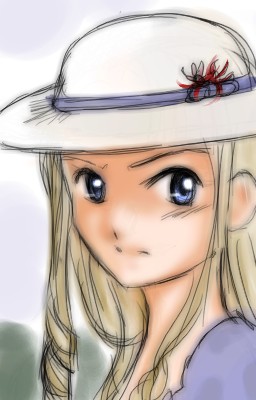
Gwendolyn Chant from The Worlds Of Chrestomanci by Dianna Wynne Jones
Unlike any of the characters I have previously mentioned, Gwendolyn is the definite antagonist of the Chrestomanci series, displaying an innovative cruelty that appealed to my ten-year-old self. Gwendolyn appears to be a powerful witch, far stronger than her mousey brother Eric ‘Cat’ Chant, who is her only surviving relative as their parents drowned in a boating incident. However, it comes to light that dear old Gwen has absolutely no magical power of her own and is instead borrowing everything she has from Cat, who is actually a remarkable sorcerer kept down by his sister. She keeps him weak and vulnerable, collecting his nine lives into a matchbook so that she can abuse them with ease. Apart from being stroppy and bossy and wildly wilful, Gwendolyn’s style was what won me over – she spends an awful lot of time kicking people with pointy shoes and whirling around and generally being rather foul to everyone that she meets. I cannot decide whether Gwen is charmingly dreadful or dreadfully charming, but she really is the most wonderfully obstinate little brat, a delightfully wicked would-be riot grrrl.
Authors and filmmakers, I beg of you – when you create your women as two-dimensional and personality-free, you deprive us of someone to relate to
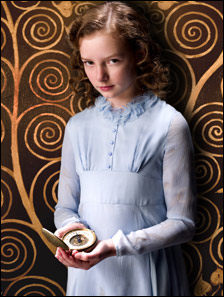
Lyra Silvertongue from His Dark Materials by Philip Pullman
His Dark Materials compete only with the aforementioned Unfortunate Events as my favourite series of all time, and this is largely down to Lyra Belacqua of Oxford, or alternatively, Lyra Silvertongue, so named for her impressive deception skills. Lyra is academically unintelligent, due to a complete contempt for formal education, but proves herself to be exceptionally brave, if often rash and impulsive, and intuitive to an art. The Northern Lights sees Lyra search for her best friend Roger, escaping her pursuers, befriending talking bears and witches and breaking out of an experimental medical facility that separates children from their soul-embodiments, or ‘daemons’, only for Roger to perish at the last moment at the hands of people revealed to be her parents. If you thought that would phase her, think again. She is the ‘girl destined to bring about the end of destiny’, the ‘second Eve’, the girl who will ‘bring an end to death’. Lyra literally divides herself from her soul in order to do what must be done, and although her character is decidedly imperfect with her terrible rages and blunt style, the blend of naiveté and courage mixed with the coming-of-age both of a young lost girl combined to create perhaps the greatest female protagonist I have ever encountered in children’s literature.
Whilst in no way conclusive – Malorie Blackman’s creations, Philip Rigley’s Scribblegirl and Tally Youngblood from the Uglies series deserve honourable mentions – the above characters demonstrate my young self’s relative luck in being able to find female leads or important side characters that existed for themselves and not to complement the male plotline in some way. I read like it was going out of style as a child and yet the books are by far the most prominent in my memory, and this is in no small part down to their importance in showing me that girls CAN be the leaders, they CAN have a mind of their own. Authors and filmmakers, I beg of you – when you create your women as two-dimensional and personality-free, you deprive us of someone to relate to. The Bond series hold no interest for me because I cannot share in the story – the characters I am represented by are primarily seductive rather than interesting or important. I read the Hunger Games books when I was already old enough to have picked my own real-life role models, but I know that somewhere out there, some young girl’s Katniss Everdeen is what Lyra was to me. And that is really something special.
Other articles you might like:
Happy Roald Dahl Day - You Made My Childhood Worthwhile
Once Upon a F**king Time: The Alternative Children’s Book
Click here to follow Sabotage Times on Twitter
Click here to follow Sabotage Times on Facebook
If you like it, Pass it on
 COMMENTS
COMMENTS
"Trillian is by far the most together and capable character in Hitchhiker’s Guide" Let's face it. Her only competition consists of a man in a dressing gown, a pissed-up journalist and a two-headed geezer who, and I quote: "goes to pieces so fast that people get hit by the shrapnel." Great piece. Love it.
Hitchhiker’s Guide To The Galaxy is not and never will be a children's book. Children can read and enjoy it, although anyone under 40 might struggle with the jokes as the years go on (I didn't get Ford Prefect first time round). Still, first-rate internet pedantry I know, but totally not a children's book.


 RELATED
RELATED


